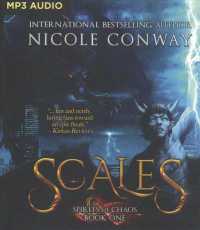Full Description
US Secretary of Education, highlighted the "Raise the Bar: Lead the World" call to action that was then the slogan of US Department of Education in an interview hosted by The Atlantic. Cardona took part in a convening of "activists, policy makers, industry leaders, and pioneers" working to close multiple equity divisions across multiple indicators. While Cardona's focus during the interview was on the situation in the United States, the conditions for learning that he discussed surely resonate in international contexts in which dedicated educators are also keen to raise the bar and lead the world.
Such an ambitious call to action would be challenging during a time of consensus, but our contemporary educational context both nationally and internationally is characterized by divisions of perspectives regarding the causes of and remedies for student achievement and discipline disparity, in addition to a raft of mental health and well-being issues. Further, there are unresolved concerns over who can teach what and to whom in the wake of legislative initiatives. One could be excused for suggesting that, in the contemporary field of education, we are uncertain about where we are and where we are going, but there is no shortage of ideas about what to do next.
The authors whose work are showcased in Learning in a Time of Division: School-University-Community Research in Education share the ways in which their practice as educators has enshrined viable ideas about how to bridge divisions and facilitate learning, thereby contributing to reuniting a polarized world.
Contents
Introduction
Chapter 1. Guiding Urban Youth Across the High School/College Divide: Insights from a Community-Engaged Research Project; Jie Park, Peter Weyler, Amber Pouliot, and Kasandra Garcia
Chapter 2. Lessons Learned from the Leading in Newcomer Communities and Schools Partnership Project; Gloria E. Miller, Rashida Banerjee, Lydia Dumam, Savannah Hobbs, Grace C. Ilori, and Clara Cuthbert
Chapter 3. On Working Toward Equitable Learning Communities: Thinking Across National Borders; Joanie Crandall and Paul H. L. Easterling
Chapter 4. Bridging the Gap: Reforming Grading Practices for Improved Student Equity and Achievement; Laura J. Link, Maureen P. Leeson, and Joseph R. Anthes
Chapter 5. Meeting the Needs and Expectations of Parents in a University-Community Partnership: Bridging the Town-Gown Division through an After-School Tutoring Early Field Experience; Meagan C. Arrastía-Chisholm, Samantha Tackett, Kelly M. Torres, and Carlos Hundley
Chapter 6. Exploring the Weaponization of Professionalism: Implications for Educator Well-Being and Retention in Academic Spaces; Dyann Logwood, Heather Nicholson-Bester, and Hannah Bollin
Chapter 7. Evidence-Based Practices for Improving Science Education Learning Conditions in a Time of Division: Understanding the Knowledge and Opinions of Turkish Pre-Service Physics Teacher; Sevim Bezen
Chapter 8. Partnerships and Collaborations: A Multifaceted Narrative; Marius Boboc, Xiongyi Liu, Elena Andrei, Mary Frances Buckley-Marudas, Grace Huang, Terri Purcell, Sharon Swan, Markita C. Warren, and Anne Galletta
Chapter 9. Exploring University and Community-Based Partnerships within a Preservice Education Course; Curtis Mason, Elizabeth Coder, and Cara Knox Gutzmer
Chapter 10. Epistemic Authority and School-University Partnerships: Findings from a Collaborative Inquiry; Angela Vemic, Lincoln S. Smith, Sisi Xiao Feng, and Danielle Denichaud
Chapter 11. Navigating the Challenges of School, Community, and University Partnerships; Regina Garrett-Spruill







